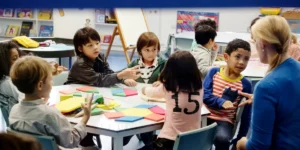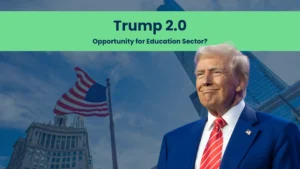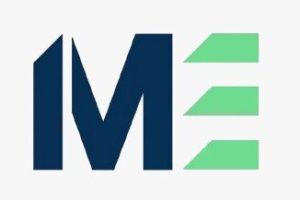India’s journey toward establishing a special needs education system shows both notable progress and ongoing challenges. In a country rich in diversity—encompassing various languages, cultures, and abilities—the educational system is gradually recognizing the importance of inclusive learning. Once marginalized, special needs education in India is now at a critical turning point: Is the country facing a systemic dilemma, or are we witnessing the initial steps of a newcomer aspiring toward inclusive transformation?
Historical Context and Policy Shifts
Historically, the Indian education system for children with disabilities has been based on separation. Specialized schools were established by missionaries in the late 19th century, and for many years, the prevailing belief was that children with physical, sensory, or intellectual impairments could not succeed in a regular classroom setting.
As a result, these children were often excluded from classrooms or even denied access to schools entirely. However, since the 2000s, policy reforms have shifted toward inclusion, emphasizing the right of every child to receive a quality education within the mainstream school system.
Current Landscape
India has one of the largest populations of school students worldwide. This has resulted in challenges in delivering inclusive and specialized education to students with special needs.
- As per UNESCO State of Education in India 2019 report, more than two percent of children between 10 and 19 years live with disabilities, and this age group forms the largest cohort among children with disabilities.
- As per the UDISE 2023-24 annual report, there are 2,114,110 CWSN (Children with Special Needs) enrolled in schools.
- According to the 2011 Census, India needed around 1.5 million special educators for children with special needs (CWSN) who should be certified by the Rehabilitation Council of India (RCI). However, by 2022, only about 100,000 special educators were registered with the RCI.
It shows that in the current scenario, the situation for CWSN requires great care from both society and the government.
Policy Interventions
The government has taken note of the changing circumstances and is now bringing policy changes to the forefront.
- As part of the Samagra Shiksha initiative, the central government has revised the Inclusive Education of the Disabled at Secondary Stage (IEDSS) guidelines for inclusive education for CWSN between classes IX and XII, which includes financial assistance, resource rooms for students, and special training for teachers.
- The government has set an ideal student-teacher ratio at the primary level of 10:1 and the secondary level of 5:1 for SEN.
- National Education Policy (NEP) 2020 has provided a broad set of relaxed guidelines to meet the demand of CWSN and the vast requirements of special educators
Although the central government is implementing various guidelines for inclusive education, it faces numerous challenges associated with it. The absence of strict policies by the Government of India has led to the creation of separate policies by various states. Challenges, such as difficulties in obtaining certification from the Rehabilitation Council of India, restrictive guidelines, and limited resources at the grassroots level, have diminished the effectiveness of these initiatives.
How NEP 2020 is promoting Inclusive Education through its guidelines:
- Adoption of Formative Assessment
- Competency-based education and assessment
- Encouragement of a multi-dimensional assessment methodology which evaluates a child’s progress holistically
Legal Interventions
- In March 2025, following up on its judgments in 2021, the Supreme Court of India issued a directive to all the states and union territories to issue a notification for vacant SEN teacher positions and fill them as soon as possible.
- In December 2024, the Madras High Court made an observation that 28% of seats for special education teachers are vacant across Tamil Nadu.
- In 2021, the Supreme Court of India
- Had issued a directive to all state and union territories to appoint a SEN educator/teacher in each school by March 2025
- Asked the Government of India to fix the student-teacher ratio for CwSN
Persistent Dilemmas and Systemic Challenges
Despite these advancements, the journey toward true inclusion faces several challenges:
Executive inaction: Even after the Supreme Court of India’s directive in 2021, around 150,000 positions for special educators remained vacant as of 2024. This highlights the government’s reluctance and policymakers’ insensitivity towards CwSN.
Infrastructure Deficits: Many schools lack essential accessibility features—such as ramps, tactile pathways, and adaptive classrooms—hindering the independence and dignity of students with disabilities.
| Total Number of Schools in India | 1,471,891 | |
| Schools with CwSN-friendly toilets | 506,695 | 34% |
| Schools with functional CwSN-friendly toilets | 473,956 | 32% |
| Number of schools with ramps for CwSN | 1,134,850 | 77% |
| Number of schools having ramps with handrails for CwSN | 769,906 | 52% |
Source: UDISE+ 2023-24 report
Additionally, according to UDISE+ data for 2023-24, state government schools and private unaided recognized schools are falling behind central government schools in terms of CwSN-friendly facilities within the school.
Teacher Training and Attitudes: There is a significant shortage of special educators across the country due to the following two main reasons:
- Strict guidelines by the Rehabilitation Council of India, which has taken the role of regulator instead of facilitator. It doesn’t allow a special educator to have expertise in multiple types of disabilities. These guidelines are relaxed in the New National Education Policy 2020; however, creating a policy is under the state’s domain.
- Insensitivity of state governments towards CwSN due to delay in preparation of policies, and filling up the post of special educators across the schools
A significant shortage of trained special educators and a lack of awareness among mainstream teachers hinder effective inclusion. Many educators feel unprepared to meet the diverse learning needs of students, which can perpetuate exclusionary practices.
Societal Attitudes and Stigma: There is a long, deep-rooted bias towards CwSN, which often results in segregation and limiting social inclusion for these children.
- A report from UNESCO in 2019 revealed that in India, 75% of CwSN aged above five are left out of the education system
- States such as Kerala and Tamil Nadu, where literacy is highest in the country, 27% and 33% of out-of-school children are with special needs.
Curricular and Assessment Rigidities: Due to the absence of specific guidelines and courses for CwSN, these children study using available standardized curricula and assessment methodologies. It fails to accommodate the diverse learning needs of CwSN, placing them at a disadvantage.
- A survey conducted in Odisha showed that CwSN face difficulty in regular participation, confirmed by 75% of peer students of CwSN. The main reasons are lack of teacher preparedness or inadequate accommodations.
- According to a study conducted by Desh Vikas in 2024, traditional assessment systems have marginalized CwSN because of their unique and different needs.
Resource Constraints: Under the Samagra Shiksha scheme and the NEP 2020, the Government of India is bringing a paradigm shift in policy for CwSN. However, there are various requirements in the space that can’t be met with the current resources.
- Lack of special educators: As of December 2024, 150,000 special educators’ posts were lying vacant in schools across India
- Limited funding: The Samagra Shiksha scheme provides a stipend of INR 3,500 per student per year, which is usually inadequate for expenses such as transport, assistive devices, and individualized support.
- Policy gaps: UDISE+ provides most segregated data for CwSN; however, it also fails to break data by disability type and severity, making it difficult for policy planners to introduce targeted interventions.
A Novice Approach or a Work in Progress?
India is shifting away from traditional past practices and adopting innovative methods for inclusive education. This new approach emphasizes personalized education plans, home-based learning, automated and adaptive systems, and the integration of technology. These initiatives aim to change policymakers’ perceptions of CwSN. However, the transition remains inconsistent, incomplete, and challenging across regions and schools due to various factors previously discussed.
Balancing inclusive education with the realities of implementation is one of the dilemmas present before the Indian education system. With new policies supporting mainstream education for CwSN, challenges associated with infrastructure, social prejudices, and lack of empathy from the system force parents and educators to decide between mainstream education and special education schools rather than inclusive education.
The Way Forward
For special needs education in India to move beyond a dilemma and become a transformative force, several steps are essential:
- Policy modification at state level: Since education is a state subject under the constitution, it is state governments’ responsibility to bring flexibility and relaxation in norms related to special educators’ posts to fill vacant posts at the earliest
- Comprehensive Teacher Training: Vacant posts of SEN educator bring the responsibility of handling CwSN sensitively for regular teachers. Regular teachers are not trained to understand various special conditions of different children. Henceforth, it is necessary to provide training not only to special educators but to all teachers.
- Infrastructure Upgrades: Due to limited CwSN-friendly infrastructure, either the child drops out of the education system or does not study in higher grades. Upgrading the basic requirements should be the priority for both government and private school management to make them CwSN-friendly.
- Curriculum flexibility: NEP 2020 envisages multiple steps for the betterment of CwSN. However, curriculum flexibility is one of the key points for CwSN to meet their study pattern and other related essentials.
- Sustained and Increased Investment: Although the Government of India and state governments have increased investment towards the special needs of various children. However, according to a few studies, funding is neither consistent nor sufficient to meet students’ requirements. Therefore, the government needs to increase funding for assistive technologies, support services, and research in inclusive education.
Conclusion
To quote Amartya Sen, “India has a highly developed, albeit overextended, higher education sector, sending nearly six times as many people to universities as China does relative to its population. However, it remains one of the most underdeveloped countries in the world when it comes to elementary education.”
Inclusive education is not just a policy goal — it’s a moral imperative. The Government, educators, and society must come together to ensure every child learns with dignity, support, and equal opportunity.
References:
- https://ncert.nic.in/degsn/pdf/final report.pdf
- https://www.linkedin.com/pulse/enabling-inclusivity-indias-progressive-leap-special-bis6f
- https://education.economictimes.indiatimes.com/blog/inclusive-education-in-india-challenges-and-opportunities/120888346
- https://digitalcollections.sit.edu/cgi/viewcontent.cgi?article=3877&context=isp_collection
- https://www.inclusive-education-initiative.org/blog/examining-disability-inclusion-indias-new-national-education-policy
- https://www.eldis.org/document/A41955
- https://www.deccanherald.com/opinion/how-much-do-we-care-for-special-education-needs-1120199.html
- https://www.raijmr.com/ijrhs/wp-content/uploads/2024/06/IJRHS_2024_vol12_issue_03_04.pdf
- https://www.researchgate.net/profile/Syed-Basha-2/publication/385038667_Assessment_and_Evaluation_of_Children_with_Special_Needs_A_Critical_Review_of_NEP-2020/links/67124c53035917754c0798a2/Assessment-and-Evaluation-of-Children-with-Special-Needs-A-Critical-Review-of-NEP-2020.pdf?__cf_chl_tk=S4rKR_fdgsZOIDkeLxf8E4Gy986uuUGe1Ai4lYTaY.g-1750770377-1.0.1.1-zALxNP_xU63ZH5naoY.D7IQy91qLhD7tq_CR6BDbUL4





